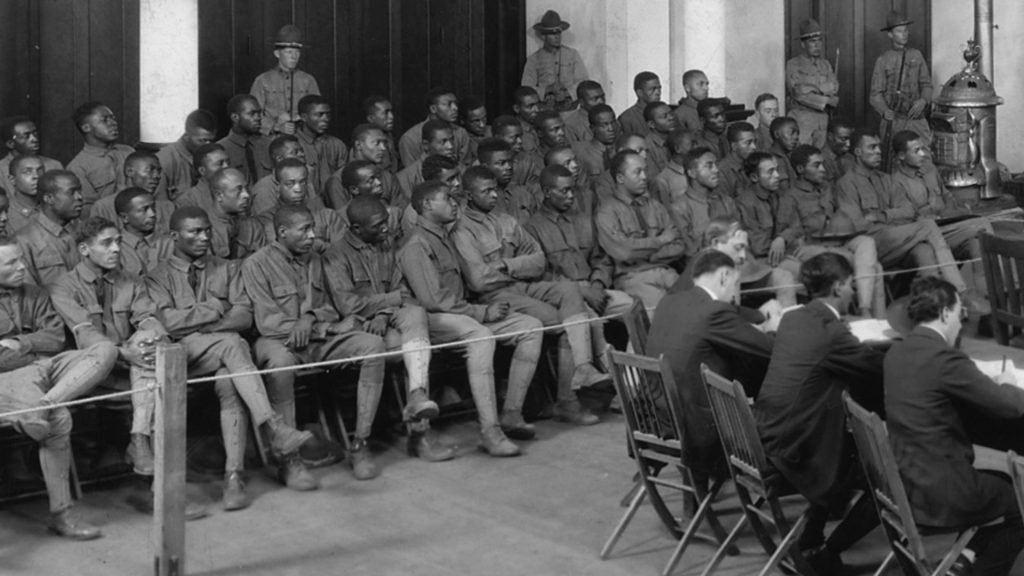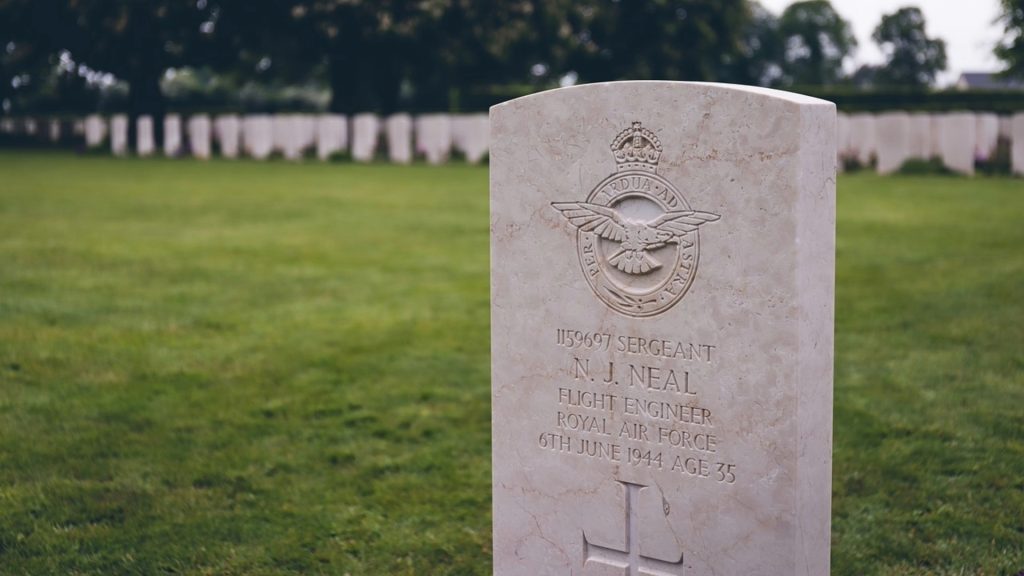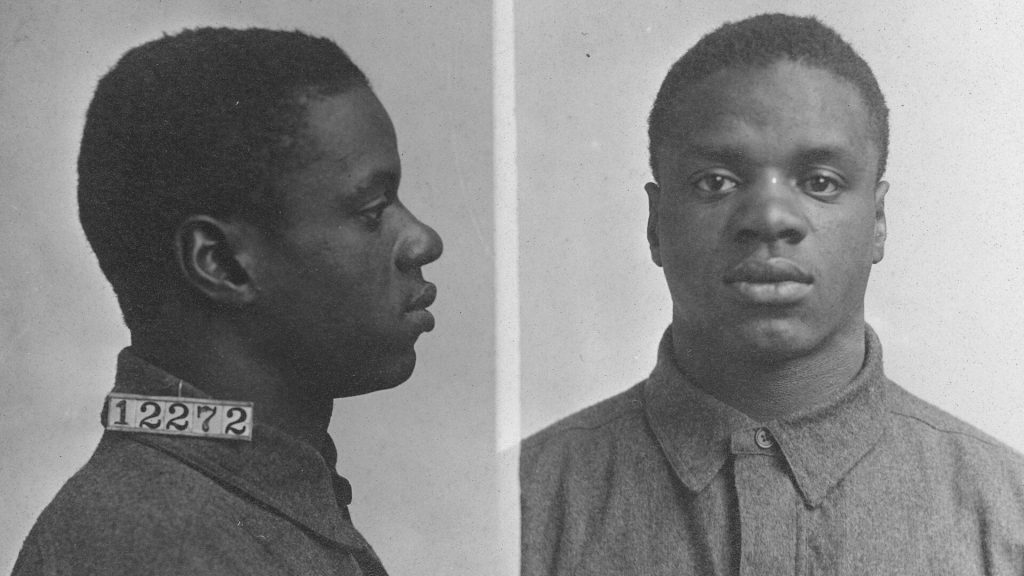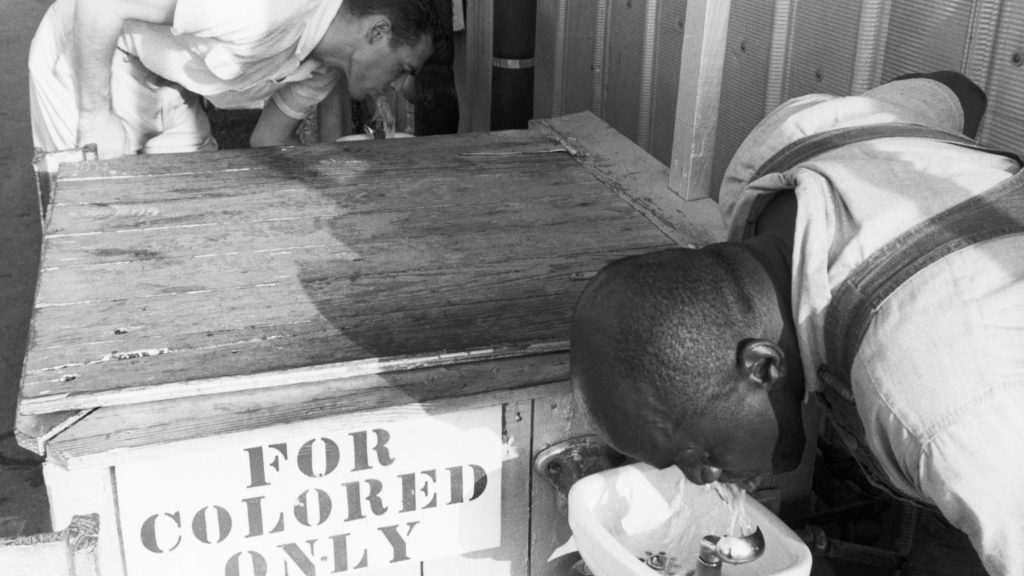The U.S. Army took a significant step towards honoring the families of executed Black soldiers from the Jim Crow era on Thursday.
New headstones were provided for these soldiers in the Fort Sam Houston National Cemetery as a symbolic measure to acknowledge the injustices done to each of them.
The Century-Old Wrongful Execution Of 17 Soldiers
There were 17 Black soldiers executed in the aftermath of the historic Houston Riot of 1917 – including Corporal Charles W. Baltimore. Each of these soldiers was wrongfully executed that year at Fort Sam Houston and buried in the cemetery.

The U.S. Army has publicly admitted that the guilt of those soldiers was never firmly established. In addition, they confirmed that neither of the soldiers was given a fair trial.
Clemency Granted To Over 100 Black Soldiers
Army Secretary Christine Wormuth announced back in November that clemency was officially granted to 110 Black soldiers. This number included the 19 soldiers who were hanged directly at Fort Sam Houston.

It may not seem as if this was a significant gesture – especially considering how much time has passed. However, this decision officially set aside those past convictions. In addition, it modified their service records to show that they served honorably.
Old Headstones Replaced With Proper Memorial Headstones
The old headstones that have existed in the cemetery for these affected soldiers just showed their births and death dates of the soldiers. They also reflected the basic facts about their respective Army careers.

The new headstones, on the other hand, recognize the ranks and overall service of each soldier. This includes the unit in which they served and the war zones to which they were deployed – including Mexico and the Philippines.
New Headstones ‘Right The Wrongs Of The Past‘
Veterans Affair Under Secretary of Memorial Affairs Matthew Quinn acknowledged at the ceremony on Thursday that the replacement headstones “right the wrongs of the past and honor the service of these soldiers who served our country with honor.” He also added that the headstones symbolize the Army’s commitment to “helping correct the injustice of that area.”

President Biden nominated Matthew Quinn for his position and the Senate confirmed it in June of 2021. He currently leads over 150 VA national cemeteries and over 120 VA grant-funded state and tribal Veteran cemeteries.
Headstone Replacements Show ‘Regiment’, ‘Shared Experiences’ Of Units
Veterans Affairs Deputy Secretary Tanya Bradsher confirmed that the headstones show the rank of each soldier to highlight their dedication to the armed forces. It is also a reflection of their commitment to duty and proven leadership.

Bradsher stated that the headstones remind us “that those who signed to protect our nation come from all places” – which is why they also show each soldier’s state of origin. She further explained that the headstones will display their “regiment connecting them to their comrades” along with the “shared experiences the unit had in safeguarding our nation.” Bradsher is an Iraq combat veteran and retired Army lieutenant colonel.
Clemency Decision Based On Petition, Authors ‘Proud’ At Army’s Response
Historian John Haymond and retired Army lawyer Dru Brenner-Beck were also in attendance at the ceremony on Thursday. Haymond and Brenner-Beck were reportedly the authors of the petition on which Wormuth ultimately based on her clemency decision.

Brenner-Beck, who is also a retired lieutenant colonel, stated that she was “proud that the Army lived up to its values” and its “duty of loyalty to these soldiers.” She further expressed that being able to see their headstones “finally reflect their service to our nation” was still justice even with such a substantial delay.
What Happened At The Houston Riots Of 1917?
The spark that lit the fuse leading to the Houston Riots of 1917 started on August 23 of that year when a black soldier and white police officer got into a conflict within a segregated district of Houston, Texas. The police officer beat the soldier, which sparked outrage among the other black soldiers at Camp Logan.

In response to the injustice done, nearly 150 armed soldiers from the Third Battalion, 24th Infantry Regiment marched directly into the city and essentially started the destructive and chaotic riots. The trials were notably marked by prejudice and racism – which led to lengthy prison sentences and executions for each of the accused soldiers.
One Defense Lawyer, Ten Days To Prepare
Major Henry Grier made history in the aftermath of Houston Riots of 1917. He was the only defense attorney assigned to represent all of the 118 soldiers charged with crimes related to the event.

In addition, Grier was only provided with ten days to prepare a defense for all 118 of his clients. There was no investigative support available for Grier either as he prepared for this monumental case. On the other side of the courtroom, the prosecution had a team of lawyers and full access to the results of multiple investigations.
President Woodrow Wilson Commuted Ten Death Sentences
Within a few years, the Army realized that there were some key shortcomings within the legal system. Public outcry from white leaders and African Americans alike led to major changes being made.

For instance, President Woodrow Wilson commuted ten of the 29 death sentences. The NAACP also played a major role in lobbying to get most of the soldiers with long prison sentences released by 1930.
Who Was ‘Jim Crow’?
“Jim Crow” was never a real-life person. On the contrary, the name was given to a series of rules and regulations that highlighted and essentially promoted racial discrimination and segregation. These laws, which reigned in the southern parts of the U.S. for years, required the separation of white people and black people.

The name itself came from the stereotypical characters that would be used within old minstrel shows. In these shows, white people would use blackface paint to act out the presumed stereotypes of black people.
The Historical Importance Of Jim Crow Laws
The Jim Crow-era of life in the southern parts of the United States emphasized a relatively dark period of American history that is still being reflected on and taught today. The denial of standard civil rights in addition to the prevalence of racial discrimination and segregation were clearly evident.

These laws, which were enacted in the aftermath of the Reconstruction era, affected public facilities of all types – including restaurants, schools, and public transportation. The systematic oppression of black Americans and the institutionalization of white supremacy were two of the biggest exports from this historic era.
How The Civil Rights Act Of 1964 Impacted Jim Crow Laws
The Civil Rights Act of 1964 played an integral role in the eventual disintegration of Jim Crow laws. The objective of this act was to stop racial discrimination and segregation.

However, this act took it a few steps further by targeting discrimination against sex, religion, and national origin as well. President Lyndon B. Johnson signed this act into law on July 2, 1964.
How The Voting Rights Act of 1965 Impacted Jim Crow Laws
The Voting Rights Act of 1965 also helped to bury the Jim Crow laws into the soil of U.S. history. This federal legislation wiped away poll taxes and literacy tests designed to reportedly disenfranchise African-American voters – especially those that lived in the southern states.

The federal oversight of elections was authorized specifically in areas known for their discriminatory history. These steps were taken to ensure that racial discrimination within the voting process was prohibited.






